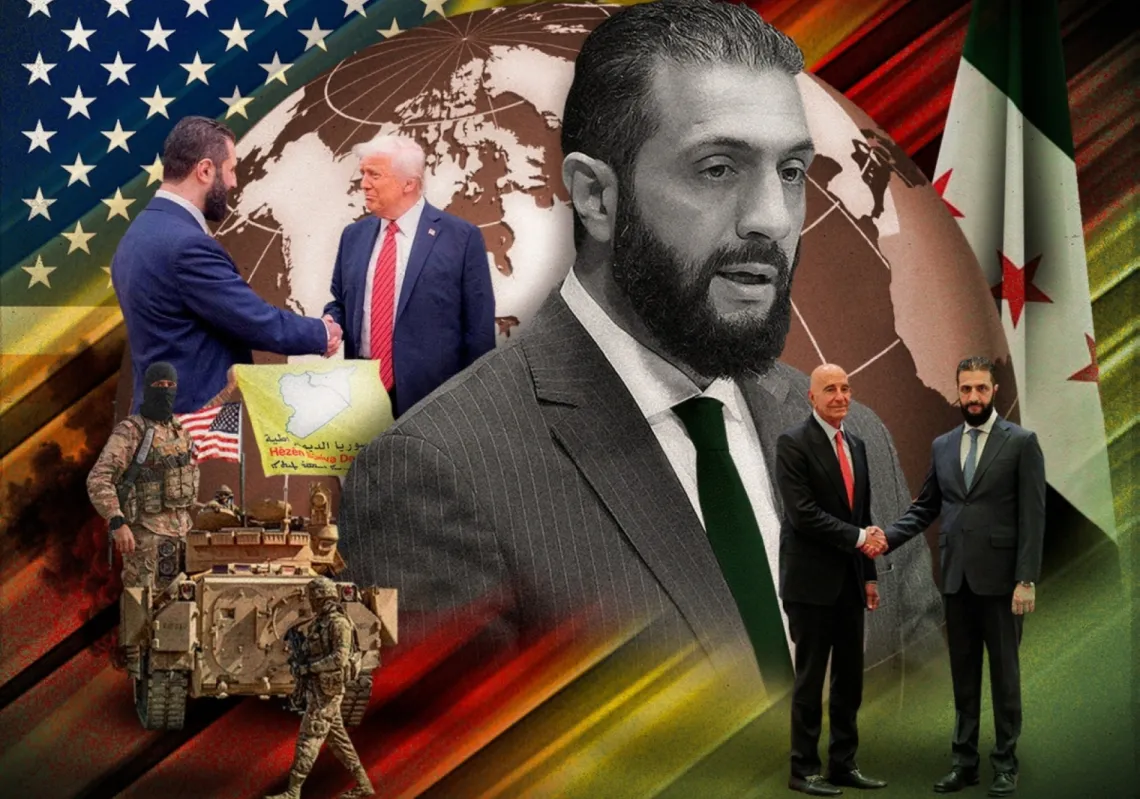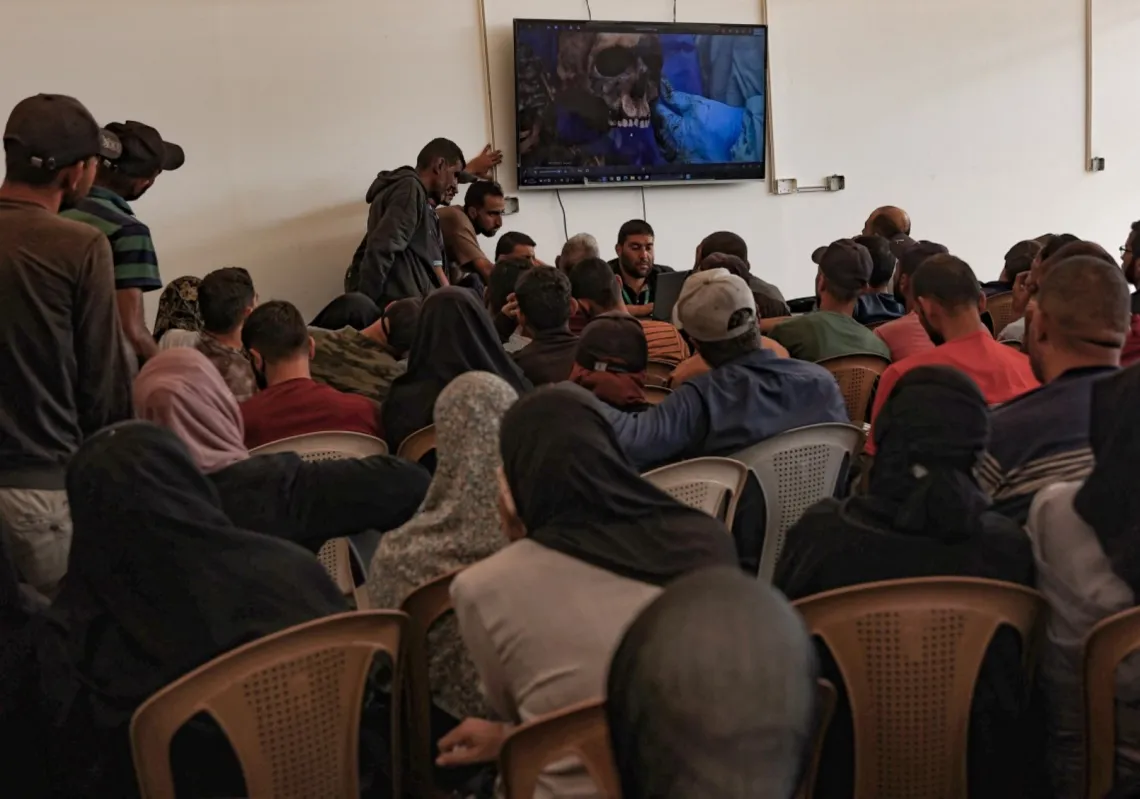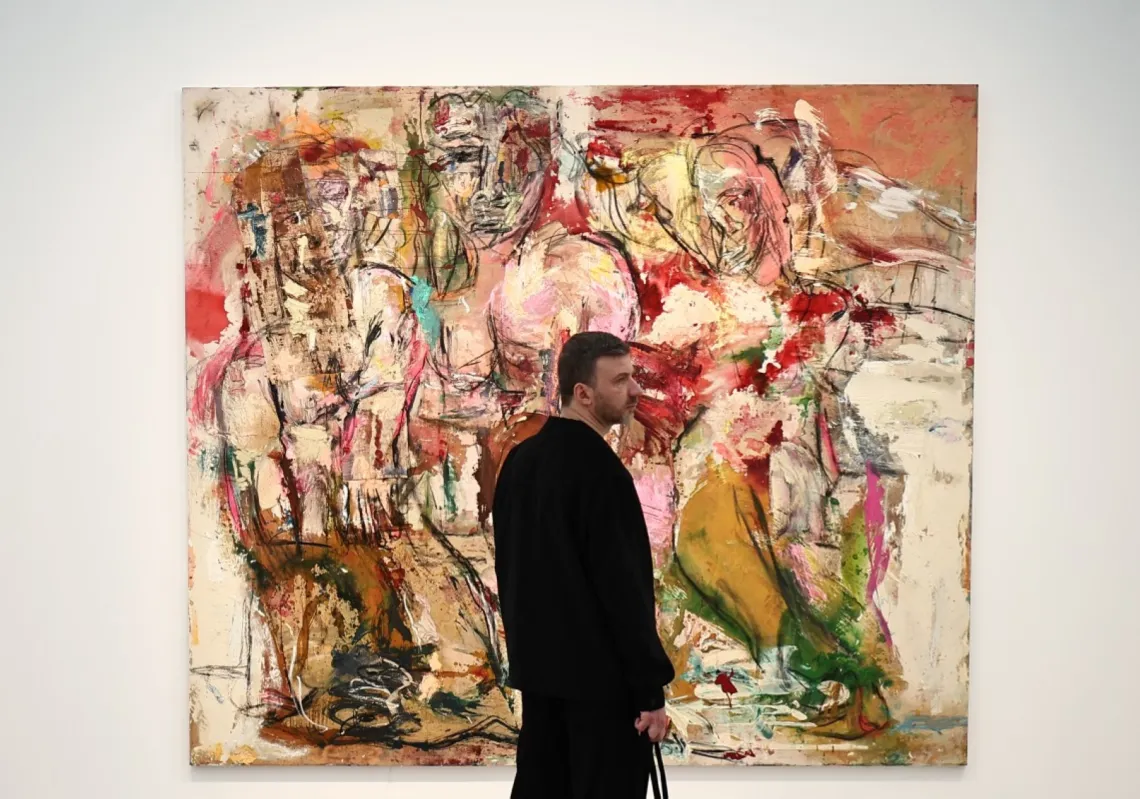 CANBERRA, AUSTRALIA - NOVEMBER 18: Indian Prime Minister Narendra Modi signs the visitors book at the Australian War Memorial on November 18, 2014 in Canberra, Australia. Prime Minister Narendra Modi is attending meetings in Sydney, Canberra and Melbourne following the G20 Leaders Summit in Brisbane. (Photo by Mark Nolan/Getty Images)[/caption]
CANBERRA, AUSTRALIA - NOVEMBER 18: Indian Prime Minister Narendra Modi signs the visitors book at the Australian War Memorial on November 18, 2014 in Canberra, Australia. Prime Minister Narendra Modi is attending meetings in Sydney, Canberra and Melbourne following the G20 Leaders Summit in Brisbane. (Photo by Mark Nolan/Getty Images)[/caption]
The Two Sides of India's Prime Minister
by Kanchan Chandra
On March 19, a short man in saffron robes and a monk’s shaven head was sworn in as chief minister of the Indian state of Uttar Pradesh. UP is India’s largest state, with a population larger than that of Russia. It had just held elections for its legislative assembly, and Prime Minister Narendra Modi’s Bharatiya Janata Party (BJP) had taken 312 of 403 seats, securing the biggest majority any party had won in the state in four decades. Yogi Adityanath, as the saffron-robed monk is known, was Modi’s hand-picked nominee to lead Uttar Pradesh’s new government. He is the head priest of a monastic order in northeastern India and an aggressive advocate for Hindu nationalism.
The appointment of a religious leader as the chief of a state government is unprecedented in Indian politics. The BJP has often included members of the Hindu clergy in its mobilization campaigns, but it has generally kept religious figures away from executive positions. (An exception is the Hindu nun Uma Bharti, who is now a cabinet minister in Modi’s government and served as chief minister of the state of Madhya Pradesh from 2003 to 2004; unlike Adityanath, Bharti does not head a religious organization.)
Indian newspapers exploded with astonishment when the BJP announced Adityanath’s appointment—not only because of his background but also because of the timing of his selection. The elections in Uttar Pradesh were the first state contest since November, when the Modi government demonetized high-value Indian banknotes in an attempt to curb illicit transactions, and the BJP’s victory seemed to reflect a popular endorsement of Modi’s reforms. Modi himself suggested as much: the election, he said in a speech in Delhi, marked the dawn of a new India, in which citizens would vote to advance development rather than identity-based issues.
Why, then, did Modi choose a chief minister who built his reputation on an extreme form of identity politics? Adityanath founded a Hindu youth group implicated in Hindu-Muslim riots in Gorakhpur and its neighboring districts from 2002 onward (he was personally accused of inciting some of the violence); has led conversion movements in what he calls an attempt to bring non-Hindus “back home”; and has spoken out in support of U.S President Donald ’s ban on travelers from several Muslim-majority countries, saying that India needs similar restrictions. Modi has acted as though he hasn’t noticed. “Our sole mission [and] motive is development,” he declared in a tweet posted after attending Adityanath’s swearing-in ceremony.
The mixed signals have thrown observers into a frenzied search for Modi’s true political identity. “Is he really a reformer focused on generating the jobs the country needs,” an article in Time asked, “or is the language of development, propagated via an unremitting stream of slogans, speeches and tweets by the prime minister and his top officials, actually a cover for Hindutva, an ideology that sees India as a Hindu nation?”
When Modi ran for prime minister in 2014, some commentators thought that he was beginning to moderate his commitment to Hindu nationalism, in line with what the political scientists Lloyd and Susanne Rudolph have called the “centrist equilibrium” of Indian politics. His speech reacting to the BJP’s victory in Uttar Pradesh fed the same expectation. In fact, Modi has always been both a reformer and a Hindu nationalist, and this two-dimensional package is the essence of his appeal.
REACTION AND REFORM
Consider first Modi’s commitment to economic reform. From 2001 to 2014, as chief minister of the state of Gujarat, Modi became known for the so-called Gujarat model of economic growth, which involved cutting red tape, cracking down on corruption, and making land available to the private sector at concessional rates. Since he became prime minister in 2014, Modi has gone further, working not only to streamline but to transform the Indian economy. The most ambitious of his plans is to make India’s economy cashless, using the resulting technology to address issues from corruption and clientelism to financial inclusion and social security. One can argue about the content of Modi’s reform policies—the Gujarat model, for example, has been criticized for privileging economic growth at the expense of human development, and his policies as prime minister have been criticized for not creating enough jobs. But what is certain is that Modi is committed to reform, and that this commitment is an essential part of his political identity.
[caption id="attachment_55253363" align="aligncenter" width="3500"]
 Chief Minister of Uttar Pradesh state Yogi Adityanath (L), Indian Prime Minister Narendra Modi (R) and Bharatiya Janata Party (BJP) president Amit Shah (C) attend Adityanath's swearing-in ceremony as the Uttar Pradesh chief minister in Lucknow on March 19, 2017.
Chief Minister of Uttar Pradesh state Yogi Adityanath (L), Indian Prime Minister Narendra Modi (R) and Bharatiya Janata Party (BJP) president Amit Shah (C) attend Adityanath's swearing-in ceremony as the Uttar Pradesh chief minister in Lucknow on March 19, 2017.Prime Minister Narendra Modi's right-wing party on March 18 picked a controversial firebrand leader to head India's most populous state, where it won a landslide victory last week. After an hours-long meeting with local BJP legislators, senior party leader M. Venkaiah Naidu announced 44-year-old Yogi Adityanath as Uttar Pradesh's next chief minister.
/ AFP PHOTO / SANJAY KANOJIA (Photo by SANJAY KANOJIA/AFP/Getty Images)[/caption]
Modi’s record as a Hindu nationalist has been similarly consistent. He spent his formative years in the service of the Rashtriya Swayamsevak Sangh (RSS), an umbrella group that presides over a network of Hindu nationalist affiliates and is the BJP’s parent organization. In 1971, at the age of 21, Modi became a pracharak—a member of a bureaucracy of celibate Hindu men working for the RSS. He later entered the BJP as a pracharak on deputation from the RSS. When the senior BJP leader L. K. Advani launched the 1990 Ram Rath Yatra, a cross-country pilgrimage calling for the destruction of a mosque in the north Indian town of Ayodhya and its replacement with a Hindu temple, Modi arranged for the pilgrimage’s kick-off in Gujarat.
In 2001, when Modi became Gujarat’s chief minister, he was still on deputation from the RSS. The next year, under his government’s watch, the worst communal riots that India had seen in at least a decade broke out in the state. More than 1,000 people died—most of them Muslim. (Modi’s government was accused of complicity in the riots; in 2012, an investigative body appointed by India’s Supreme Court said that it had not found evidence of his involvement.) In the campaign for the parliamentary elections that brought Modi to power in 2014, the BJP continued to exploit religious divisions when it was expedient: in Uttar Pradesh, for example, it capitalized on communal riots in the town of Muzaffarnagar to obtain Hindu votes.
This year’s BJP campaign in Uttar Pradesh was as much about championing the rights of Hindus as it was about reform. “If land is given for cemetery in a village, it should also be given for cremation,” Modi said at a rally in Fatehpur in mid-February, referring to Muslim and Hindu funerary practices. “If electricity is supplied during Ramadan, it should also be supplied during Diwali. There should not be any discrimination on the basis of religion or caste.” That statement was widely interpreted as an appeal to Hindus under the guise of nondiscrimination.
THE WHOLE PACKAGE
What is new about the BJP’s appeals to economic reform and Hindu identity is their simultaneity. The party has previously tended to vacillate between Hindu nationalism and economic reformism, choosing one or the other but not both at the same time. In the 1991 parliamentary elections, for example, the BJP almost doubled its vote share from 11 to 20 percent after running on a Hindu nationalist platform. That was not enough to catapult the party to a winning position, however, so in the years that followed, the BJP started to emphasize good governance and downplay religious identity. Yet the party’s ability to expand was still limited: in the 2009 election, it took just 19 percent of the vote. Only in the 2014 elections did Modi’s combination of reformism and Hindu nationalism help expand the BJP’s vote share to 31 percent.
The package deal works for at least two reasons. First, it allows the BJP to reach a wider following. What is true of voters is also true of the two organizations in which Modi is embedded. Whereas the RSS has a Hindu nationalist agenda, the BJP has plenty of members who do not have a background in the RSS and would prefer to bring the party into the mainstream. Modi has managed to keep both of these constituencies happy. What is more, pursuing nationalism and reformism at the same time offers a kind of insurance: when delivering on reform is difficult, the party can resort to identity-based appeals, and vice-versa. Seen from this perspective, Adityanath’s appointment makes perfect sense. It combined Modi’s message of development with impeccable Hindu nationalist credentials.
The trouble is that no matter whether the BJP emphasizes reform or identity, the main losers are India’s non-Hindu minorities—especially Muslims. Even when minorities benefit from Modi’s reformist policies, his majoritarian positions threaten them by placing them in a position of perpetual insecurity. And given that the lines dividing minorities from majorities are fluid, a democracy that is not safe for some minorities is not safe for any majority.
This article was originally published in Foreign Affairs









